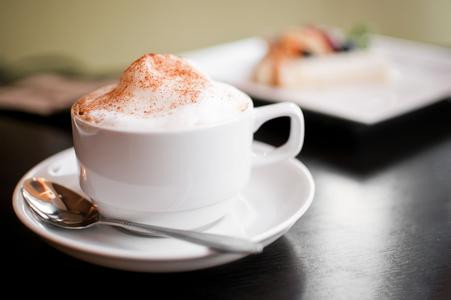Peruvian coffee, famous for its organic coffee.
Peruvian coffee, famous for its organic coffee. Peru (Spanish: Per ú; Quechua, Aymara: Piruw), the full name of the Republic of Peru (Spanish: Rep ú blica del Per ú), is a country in western South America.

Coffee origin: Peru
Peru (Peru) is also a big coffee producer. Up to 98% of Peruvian coffee is grown in forest areas, and most producers are small farmers.
Peru has good economic conditions and a stable political situation, thus ensuring the good quality of coffee. However, there are many local problems, in addition to guerrilla warfare and drug trafficking, the emergence of cholera along the coast in the mid-1990s led to a further economic depression, and what is more, the annual inflation rate reached 7000%.
In the mid-1970s, Peruvian coffee production was about 900000 bags a year, and then steadily increased to about 1.3 million bags a year. Although private exporters buy coffee in remote areas through middlemen, the main market is still monopolized by the government. Later, the private Peruvian Coffee exporters Association (Comera de Exportadores deCafe del Peru) was established, which is committed to improving the quality of coffee. Its primary task is to set standards and eliminate inferior products, so as to create an atmosphere of quality supremacy. This positive move heralds a bright future for the coffee industry. Since then, rising prices have encouraged farmers to actively grow coffee rather than cocoa, the region's traditional cash crop.
Peru's finest coffee is produced in Chanchmayo, Cuzco, Norte and Puno. Most Peruvian coffee is grown under natural conditions, but it is also difficult to confirm the cultivation of all coffee trees. The price of coffee grown under natural conditions is 10% to 20% higher than that of others, and from the perspective of poverty, farmers may not have the money to buy chemical fertilizers and pesticides, but it is really difficult to confirm all the coffee.
The quality of Peruvian coffee is comparable to that of any kind of coffee in Central or South America. The high quality coffee produced by Peru is shipped to Germany for blending and then to Japan and the United States, which illustrates the high standard of quality in another way.
Flavor and taste characteristics: high quality and balanced, palatable acidity, can be used for mixed drinks
Peruvian coffee cultivation history is not long, but as a rising star, Peruvian coffee is gradually opening up its popularity and entering the international market.
Peru is located in western South America, with a coastline of 2254 kilometers. The Andes runs from north to south, and the mountains account for 1% of the country's area. it belongs to the tropical desert region with a dry and mild climate. Peruvian coffee is mostly grown at the foot of the Andes, where it is rich in traditional Central American top coffee beans.
Peruvian coffee beans are best known for their coffee beans from Chimacha Mayou in the middle and Cusco in the south. In addition, some areas in northern Peru also produce characteristic organic coffee. Organic coffee is made of beans grown in the shade of trees. Although the yield of coffee beans is not high because of the method of planting in the shade, its quality can reach the level of gourmet coffee. This is because shading trees can slow down the ripening of coffee trees, help coffee grow fully, make it contain more natural ingredients, breed better flavors, and reduce caffeine content.
Peruvian coffee is grown in a planned way, which has greatly increased coffee production. Peruvian coffee has a mellow taste and proper acidity, and this lukewarm coffee attitude has made more and more people like it. Peruvian coffee has always been used as one of the stable mellow mixed beans of comprehensive coffee, and its rich acidity and mellow smoothness are its most prominent features. Peruvian coffee has a soft sour taste, medium texture, good taste and aroma, and is an indispensable ingredient in the production of comprehensive coffee. High-quality Peruvian coffee, with strong aroma, smooth, layered, rich sweet, elegant and mild sour taste, will quietly awaken your taste buds.
Peruvian organic coffee raw beans
Grade: first-class beans
Size: 17Mui 15 (quasi-large, ordinary, medium)
Baking method: medium, depth
Origin: Peru-Chaximayo (chanchamayo)
Features: luscious nutty flavor, and a prominent cocoa flavor
Palate: the palate is mellow with the right acidity.
Net weight: 60KG (sack)
Peruvian coffee, a rising star, is gradually opening up its popularity and entering the world. It is mostly planted in high-altitude areas, the planned planting makes the yield greatly increased, the taste mellow, the right acidity, more and more people like it.
Peru's finest coffee is produced in Chanchamayo. Most Peruvian coffee is grown under natural conditions and is absolutely organic.
The quality of Peruvian coffee is comparable to that of any kind of coffee in Central or South America. The high quality coffee produced by Peru is shipped to Germany for blending and then to Japan and the United States, which also illustrates its high standard of quality. High-quality mixed coffee suitable for all kinds of uses.
Peruvian coffee-Coffee from the Andean Glacier
Peru is a huge and diversified land for them to produce a large number of different kinds of coffee beans, Peru can produce very high-quality Peruvian coffee. In general, these coffee beans have the gloss of Central America, but they are all packaged in South American flavor. High-quality organic venues do have more rural coffee characteristics. As long as these coffee beans continue to add interesting flavors rather than weaken them. Such a cup of Peruvian coffee has all the bright and deep tastes. When a cup of ordinary Peruvian coffee is in your hand, you don't have to try to taste whether it is good or not.
Chanchamayo, a Zen tea, is usually the top region for producing good coffee beans, but high-quality Norte and Cuzco from the south are not produced there. A cup of undermade Peruvian coffee has many flaws, but it may be confused at first, but after two months, the coffee fades, its acidity drops sharply, and its natural taste fades, and you will find that you have made the wrong decision.
It is important to note that the Peruvian coffee industry has recently noticed the high profits of the organic coffee market and realized that they must reduce the cost of organic coffee as much as possible and focus on production rather than quality. They want organic coffee, just like the Vietnamese want Roberta. To stifle vibrant forests in order to build organic farms. To transform an existing farm into an explicit organic farm
Important Notice :
前街咖啡 FrontStreet Coffee has moved to new addredd:
FrontStreet Coffee Address: 315,Donghua East Road,GuangZhou
Tel:020 38364473
- Prev

Coffee making knowledge the highest level of homemade coffee: hand-made coffee
Hand flushing can bring the personality and characteristics of coffee beans to the extreme, so a single coffee bean is often chosen. Hand-made coffee was invented by the French, but it was the Japanese who carried it forward. Hand brewing is the highest state of coffee brewing. With the support of rich experience, a cup can be obtained by controlling water temperature, powder quantity, thickness, flushing speed, manipulation and extraction time with the simplest tool.
- Next

Introduction to the producing countries of fine coffee beans in Mexico
Mexico is close to the United States to the north. Due to geographical and climatic reasons, its coffee growing area is close to Guatemala, the production classification belongs to the Central American type, and its coffee production ranks fourth in the world. Brother Mo, about 70% of his coffee is exported directly to the United States, which is washed and divided into three grades according to their height. Generally speaking, the evaluation of Mexican coffee is moderate aroma and mild elegance.
Related
- Beginners will see the "Coffee pull flower" guide!
- What is the difference between ice blog purified milk and ordinary milk coffee?
- Why is the Philippines the largest producer of crops in Liberia?
- For coffee extraction, should the fine powder be retained?
- How does extracted espresso fill pressed powder? How much strength does it take to press the powder?
- How to make jasmine cold extract coffee? Is the jasmine + latte good?
- Will this little toy really make the coffee taste better? How does Lily Drip affect coffee extraction?
- Will the action of slapping the filter cup also affect coffee extraction?
- What's the difference between powder-to-water ratio and powder-to-liquid ratio?
- What is the Ethiopian local species? What does it have to do with Heirloom native species?

